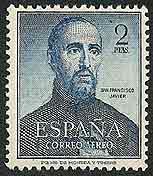
SPAIN, 1952, the 4th centenary of Xavier's death, Scott C138
based on Elías Salaverría's haunting painting belonging to the Deputation de Navarra
Saint
Francis Xavier, SJ (1506-1552) page 1 of 3 |

SPAIN, 1952, the 4th centenary of Xavier's death, Scott C138
based on Elías Salaverría's haunting painting belonging to the
Deputation de Navarra
Francis Xavier, born in Navarre of a noble family, met Ignatius Loyola while both were roommates at the College of Sainte-Barbe at the University of Paris. He became one of Ignatius' first companions, and set the tone for Jesuit missionaries for centuries to come by his work in the East. He was sent to India even before the official approval of the Society of Jesus. He traveled from India, through Southeast Asia, to Japan, and while attempting to reach mainland China died on Sancian Island, in the Bay of Canton. He and Ignatius were canonized the same day in 1622. Xavier is co-patron of foreign missions. The Novena of Grace, so called for the many graces given through it, is a particularly popular form of prayer in his honor.
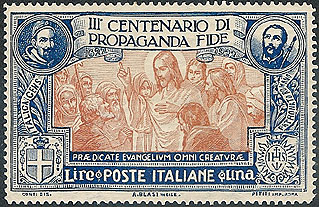
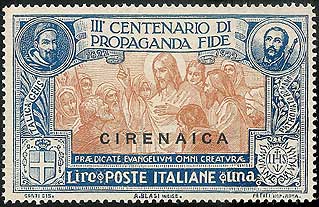
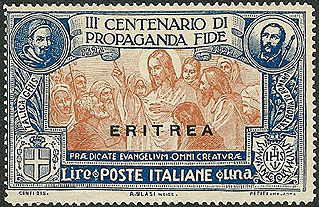
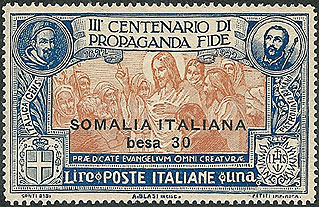
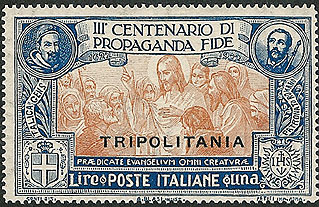
ITALY, 1923, the tercentenary of the Sacred Congregation for the Propagation of the Faith, Scott 146
overprinted by the Italian colonies of
CYRENAICA, Scott 4, ERITREA, Scott 68, SOMALIA, Scott 54, and TRIPOLITANIA, Scott 4
Sassoferrato's image of Xavier, co-patron of foreign missions, appears in the the upper right corner.
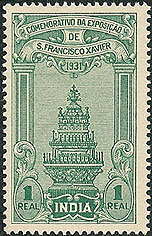
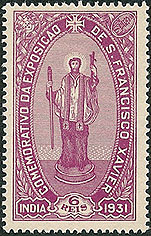
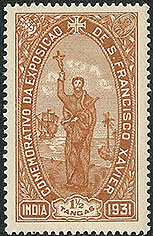
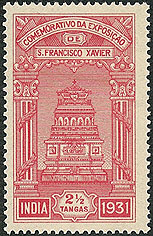
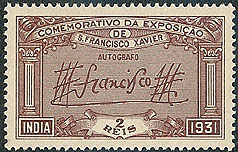
PORTUGUESE INDIA, 1931 , Scott 414-419
issued December 3, the feast of St. Francis Xavier on the occasion of the St. Francis Xavier Exposition in Goa
showing his sarcophagus and monument, Xavier preaching, his signature, and the church of Bom Gesu
where his body lies.
SPAIN, 1936, Xavier castle, Scott 629
The stamp also exists imperf, and in 8 mm width rather than 12 mm, and as an airmail overprintThe castle of Javier, near the town of the same name, was built in the tenth century and belonged to the Señores de Javier (Gentlemen of Javier). It was home to their son, Saint Francis. Both the castle and the town were won over around 1223 by King Sancho VII of Navarre, a nobleman form Aragón. In 1236 it was handed over by Teobaldo I to Adán Sada and in 1516 was partly demolished by order of Cardinal Cisneros. The castle has three main parts built at different times. The entrance is through a drawbridge leading to the courtyard defended by the tower of Cristo. The castle also has a tower called del Homenaje or San Miguél. The castle has had many owners, the latest being the House of Villahermosa, who built a basilica adjacent to its walls, restored it in 1901 and donated it to the Jesuits. The castle is currently the Museum of San Francisco Javier.
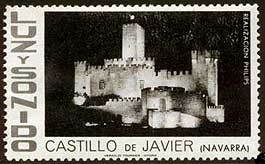
A cinderella commemorating of a Light & Sound show at the castle presented
by Realizacion Philips
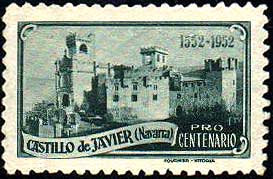
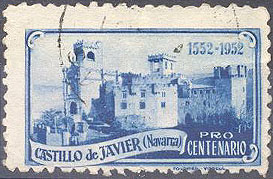


1952 Spanish cinderellas to mark the 4th centenary of Xavier's death
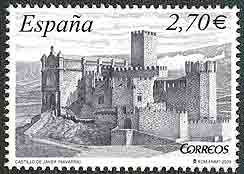
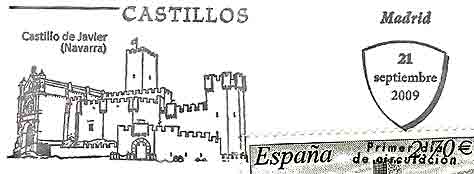
SPAIN, 2009, castle issue with its FDI cancel, Scott 3669
and another cancel showing the castle which began being used in February 2015
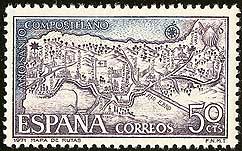
SPAIN, 1971, the Compostella Holy Year map shows Xavier castle above the large 5, Scott 1643
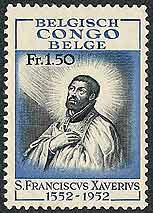
THE BELGIAN CONGO, 1952, Scott 285
RUANDA URUNDI,1952, Scott 113
based on a Rubens painting, for the 4th centenary of his death
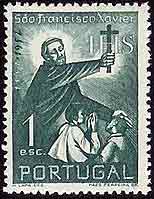
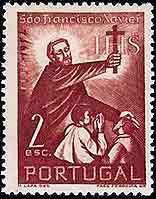

PORTUGAL, 1952, the 4th centenary of his death, Scott 753-56
based on a drawing of M. Lapa showing Xavier teaching catechism to children
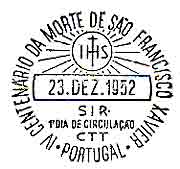
INDIA, 1952, FDI cancels for Scott 753-756